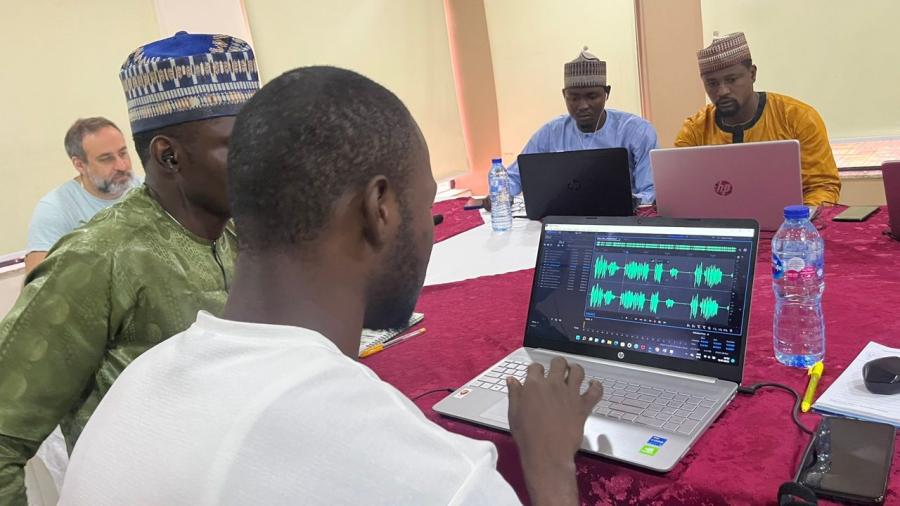Settle and London: University of Washington Press, 1995, xxi + 269 pp.,
appendix, notes, glossary, bibliography, index. 10 color photographs, 25
black and white photographs, figures, tables.
Review by Reinhild Kauenhoven Janzen, Department of Art and Theatre Arts,
Washburn University.
The universality of material and the symbolic nature of cloth was evident when Cloth That Not Die arrived while I was in the Middle of sorting my family's dowry linens for my about-to-be-married daughters. Renne's work is central to the cultural survival. The book explores the historical, social, and symbolic links between the Bunu Yorubas' identity as a people, and the uses of their handwoven cloth to constitute the dynamic story of their cultural survival in the 20th century.
"To study cloth is to study the pulse of society." In ten pithy chapters, each introduced with quotes ranging from Chaucer to Bunu, informants from George Eliot to Georg Simmel, the reader learns of the vital role of cloth, its production, and its use in Bunu social life. The analysis spans from approximately 1900 to the present. The challenging paradox which the author investigates is the continuing ritual use of handwoven cloth by women and men at times of marriage, second-burials, masquerade performance, and during illness and misfortune, while cloth production for commercial purpose no longer exists. Renne demonstrates how "the study of material thing like cloth provide a way of grasping the microscopic ways in which more abstract ideas such as the past, identity, and obligation are constituted in the course of everyday social life." She shows how in Bunu society, handwoven cloth in intrinsically linked to all matters of life and death, particularly as women and men participate in the cyclical regeneration of life.
The inclusion of Bunu narratives about the pivotal role of cloth in human relations authenticate Renne's interpretations. The wealth and complexity of Bunu textile weaving traditions also becomes immediately apparent in the useful appendix which lists Bunu cloth names, descriptions, price ranges, and uses.
Renne, who is a lecturer at the Woodrow Wilson School for public and International Affairs at Princeton University, based this book on her anthropological fieldwork (carried out between 1987 and 1991) in the Bunu District of Central Nigeria with her base in the village of Apaa-Bunu. Here she interviewed 30 women 45-80 years old who weaving. Renne also studied weaving with a Bunu weaver and thus her impressive command of all technical aspects of weaving richly informs her discussions of Bunu textiles. Moreover, Renne's archival studies in Ibadan, Kaduna, Birmingham, London, and Edinburgh add historical and scholarly depth.
This lucid, handsome volume, introduced and thus blessed by Annette Weiner (and conceived in the tradition of Weinner's and Schneider's pivotal volume, Cloth and Human Experience) constitutes a rich source for Africanists, anthropologists, social, economic, and art historians, as well as students of textile arts and of material culture. What is perhaps best about this book is what it does not require a specialist to enjoy it, to learn from it, and to apply its lessons to related contexts of material and symbolic expression.
Article copyright Cultural Survival, Inc.



